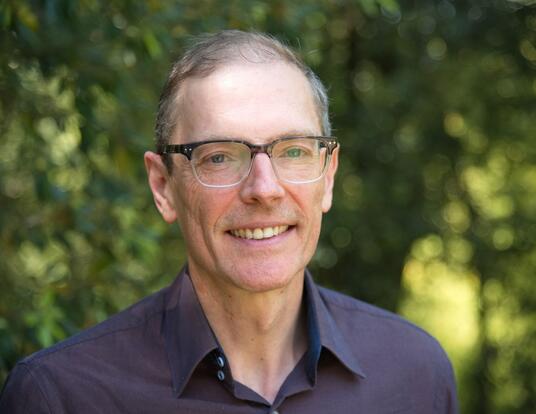Why Are Rich Countries Obese?
New study challenges the idea that lack of exercise is to blame for excess weight in the developed world

Herman Pontzer, PhD ’06, is a professor of evolutionary anthropology and global health at Duke University and the author of Burn: New Research Blows the Lid Off How We Really Burn Calories, Lose Weight, and Stay Healthy. His lab’s latest research, which draws on data from over 4,000 people in 34 populations around the world, offers surprising insights into the global obesity epidemic—and what actually causes it. In this interview, Pontzer explains why activity isn’t the main problem, how our evolutionary past shapes our modern eating habits, and why ultra-processed foods are so hard to resist.
Your lab just released some research that follows on from your 2021 book, Burn: New Research Blows the Lid Off How We Really Burn Calories, Lose Weight, and Stay Healthy. In your new study, you looked at over 4,000 adults from 34 different communities around the world. They included hunter-gatherers, farmers and herders in traditional rural communities, and finally urban dwellers in rich countries like the US, Australia, and Norway. Why those groups? How did you study them, and what were you trying to find out?
Yeah, so we’ve had this ongoing question in public health about why we have this obesity crisis in rich countries like the US. Obesity is often talked about as a “disease of civilization”—that’s a term you hear—and it’s because we don’t really see obesity and overweight and all the associated health problems in populations that aren’t modernized or developed. It really is a problem that’s unique to rich countries.
If you look at guidelines from the WHO (World Health Organization) or CDC (US Centers for Disease Control), the usual explanation is that it’s kind of a 50-50 mix: we’re eating different foods now, and we’re also burning fewer calories because we’re less active. And yeah, we definitely are more sedentary in places like the US.
But we had this inkling, from earlier studies we’d done looking at one group here or there, that maybe that explanation wasn’t quite right. Maybe it wasn’t really a 50-50 mix of diet and activity. Maybe, if we had good comparative data on energy expenditure across populations, we’d find that people don’t burn calories that differently after all. And if that were true, then the obesity problem would be mostly about diet.
So we wanted to ask: How does energy expenditure vary across levels of economic development, and how does that relate to obesity?
So, what did you find out about these groups, especially in terms of things like body fat, BMI (Body Mass Index), and energy use?
We had 34 populations, over 4,000 adults—we limited it to adults for consistency. First thing we found wasn’t surprising: as you move from hunter-gatherers to rural farmers to people living in wealthy countries, people tend to weigh more. Obesity is more common in rich countries, where it’s easier to get calories and people are less physically active. That part we expected.
We also saw that people in richer countries are taller and have more lean mass—muscle and other healthy tissue. So, they’re not just heavier in terms of body fat; they’re also bigger overall. But still, we confirmed that people in developed countries are more likely to have obesity.
Then we looked at the energy expenditure side of things. We used a technique that gives a really accurate measurement of how many calories people are burning in their normal daily life. It’s not just exercise—it includes everything: walking, thinking, digesting, sleeping. Participants provided two to five urine samples over the course of 7 to 14 days, and we got their total daily energy expenditure. What we found was that people in richer countries actually burn more calories than people in hunter-gatherer or farming communities.

People in the richest countries burn a few calories less per day, on average, than people in farming or hunter-gatherer societies. But it’s a very small and inconsistent effect.
That’s surprising, right?
It is if you’re hearing this kind of data for the first time. But for us, it wasn’t too shocking. We already know that bigger people burn more calories, just by virtue of being bigger. That’s actually one of the best predictors of daily energy burn—how big you are. So it follows that people in rich countries, who tend to be bigger, would burn more calories.
So that was one of the first big findings: people in rich countries are burning more, not less. But then we asked, “What happens if we adjust for body size?” In other words, pound for pound, where are people burning the most calories?
Across all 34 populations, we found that there was almost no effect of lifestyle on energy expenditure. There was actually more variation within populations—between two individuals in the same group—than between different populations. So when we adjust for body size, the differences mostly disappear.
Did you see any effect at all from lifestyle or level of economic development?
Just a tiny one. When we zoomed in with a big enough sample size—over 4,000 people—you can see a slight trend. People in the richest countries burn a few calories less per day, on average, than people in farming or hunter-gatherer societies. But it’s a very small and inconsistent effect.
And more interestingly, that little difference isn’t coming from movement or activity. It’s coming from resting metabolic rate—what your body burns at rest. We think that’s probably because people in farming and hunter-gatherer communities have higher exposure to pathogens. They don’t have the same access to vaccines and antibiotics, and they live in environments where their immune systems are more active. That immune activity burns energy, which shows up in the resting metabolic rate.
So yeah, if we zoom way out, the big takeaway is: there’s no meaningful difference in energy expenditure across populations once you account for size. Economic development doesn’t seem to drive differences in calorie burn.
So if activity and development aren’t driving obesity in developed countries, what is?
Well, our bodies have to obey the laws of physics, right? Everything that’s “you”—your tissues, your body fat—all of it comes from calories you ate and didn’t burn off. If the amount we’re burning isn’t changing, then the only thing left to change is how much we’re eating.
So the obesity epidemic must be driven by diet. And we were able to test that too. We asked: How much of the variation in body fat across these 4,000+ people can be explained by differences in energy expenditure? The answer was: about 10 percent. Maybe. The rest—at least 90 percent—is driven by what people are eating.
You mentioned that your study points to ultra-processed foods specifically. What do you mean by that term, and why are ultra-processed foods such a problem?
That’s a great question. “Ultra-processed” has a formal definition in research—it has to do with the number and type of ingredients, how foods are mixed, industrial processing, that kind of thing. I couldn’t quote the Nova system’s definition word for word, but basically, you already know what it means.
Go to the supermarket. The produce section? Not processed. The butcher’s counter? Not processed. But walk down the center aisles, where all the packaging is bright and the ingredient lists are a paragraph long—those are ultra-processed foods.
Our study didn’t focus on diet per se, but we had enough information from the literature about the diets of many of these 34 populations. For 25 groups, we could get a good idea of how much ultra-processed food they were eating. And what we found was that the percentage of ultra-processed food in a population’s diet strongly predicted obesity levels. It’s a really strong signal.
How much of the variation in body fat across these 4,000+ people can be explained by differences in energy expenditure? The answer was: about 10 percent. Maybe. The rest—at least 90 percent—is driven by what people are eating.
Why do ultra-processed foods affect us so strongly? What’s the mechanism?
That’s still being figured out, and it’s not something my lab is focused on directly. But there are a bunch of likely reasons. These foods are energy-dense, so you get a lot of calories in every bite. They’re also designed to taste great—flavorings and textures that are really appealing and hard to stop eating. They’re engineered that way.
They’re also aggressively marketed and super convenient. All of that combines to make them incredibly easy to overeat. So even if we don’t fully understand the biological mechanism yet, the outcome is clear: ultra-processed foods push people to overconsume.
And that’s playing into our evolutionary biology, right? Our brains are wired for survival, not restraint.
Exactly. We come into the world with brains that are excited about salt, fat, and sugar. You don’t have to train a baby to like those flavors. They love them from the start—and we still do as adults.
In the wild, or in a hunting-and-gathering context—I just got back from Tanzania, so it’s fresh on my mind—the foods people eat don’t have those same flavor profiles. They’re not overly sweet. You don’t get fat and sugar together in one bite the way you do with a processed snack. And so, our brains just aren’t prepared for what we face in a modern supermarket.
Let me ask you about genetics. One of our PhD students is researching genetic causes of obesity, and he noted that people from South Asia may be more predisposed to obesity and obesity-related conditions. Does that line up with what you’ve seen?
Yeah. I’m not a geneticist, but I think about these issues a lot. The genes associated with obesity—there are hundreds—are mostly expressed in the brain. That tells us that the brain is where the action is. It helps explain why some people can eat junk food and stay thin, and others really struggle.
We all come into the world with different genetics. Some of us are more sensitive to food cues, or less responsive to satiety signals. But—and this is important—those genes didn’t used to be a problem. They only became an issue when [foods like] Reese’s Peanut Butter Cups came along.
As for population-level differences, that’s more complicated. People from South Asia, for example, are more likely to develop diabetes at a given BMI than people from Europe. That may have to do with how body fat is distributed—how much lean mass you have, where you store fat. But it’s hard to tease apart whether that’s genetic or environmental or both.
What we found was that the percentage of ultra-processed food in a population’s diet strongly predicted obesity levels. It’s a really strong signal.
Do you think, particularly in the developed world, we get too hung up on weight when we should be thinking about fitness?
That’s a good point. Usually, when we talk about obesity, we’re using BMI as a proxy. And BMI is just weight divided by height. It doesn’t tell you how much of that weight is fat or muscle.
If someone is really muscular, their BMI might say they’re obese, but they could be in excellent health. So, yes, we need better tools. Something like a bioimpedance scale, which estimates body fat percentage, would be a better measure. They’re cheap and widely available.
That said, I think the criticisms of BMI sometimes go too far. No, it doesn’t tell you your blood pressure today, but if your BMI is high, I can tell you what your blood pressure is likely to be five years from now. Obesity is a serious risk factor. It doesn’t mean you’re unhealthy today, but it’s not something we should ignore either.
Get the Latest Updates
Join Our Newsletter
Subscribe to Colloquy Podcast
Simplecast





